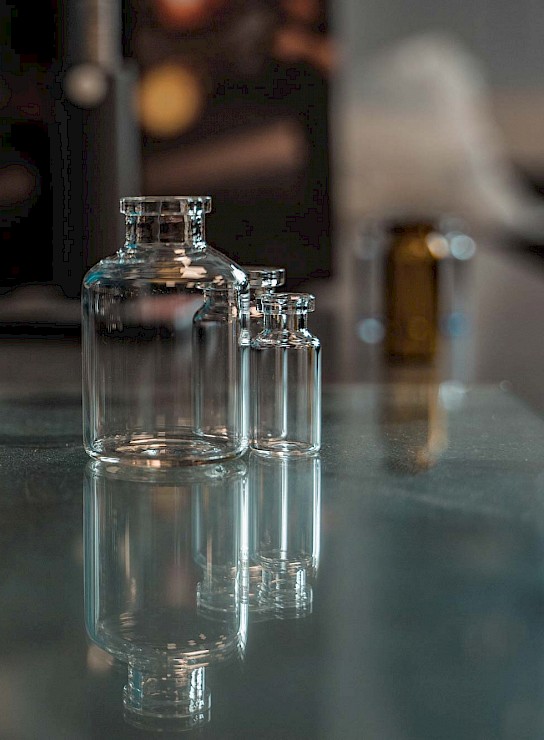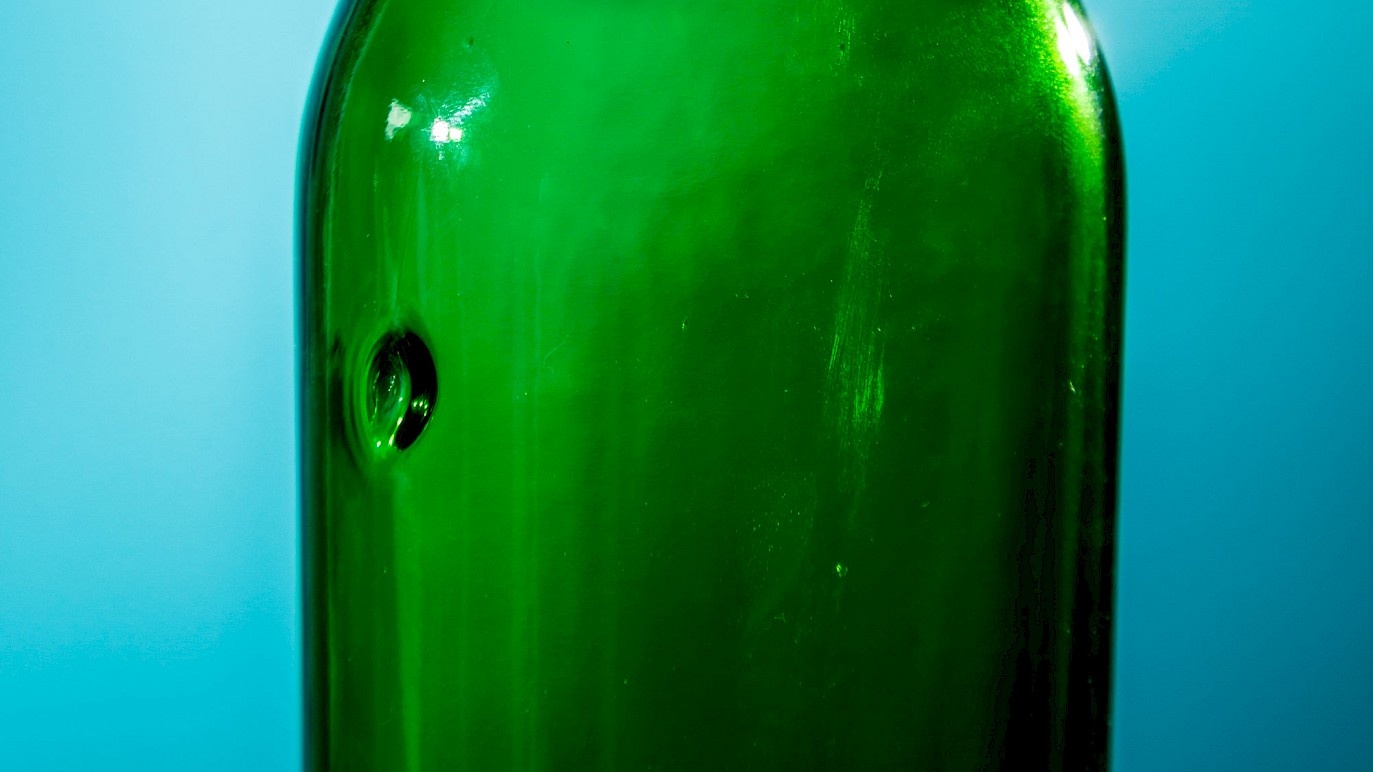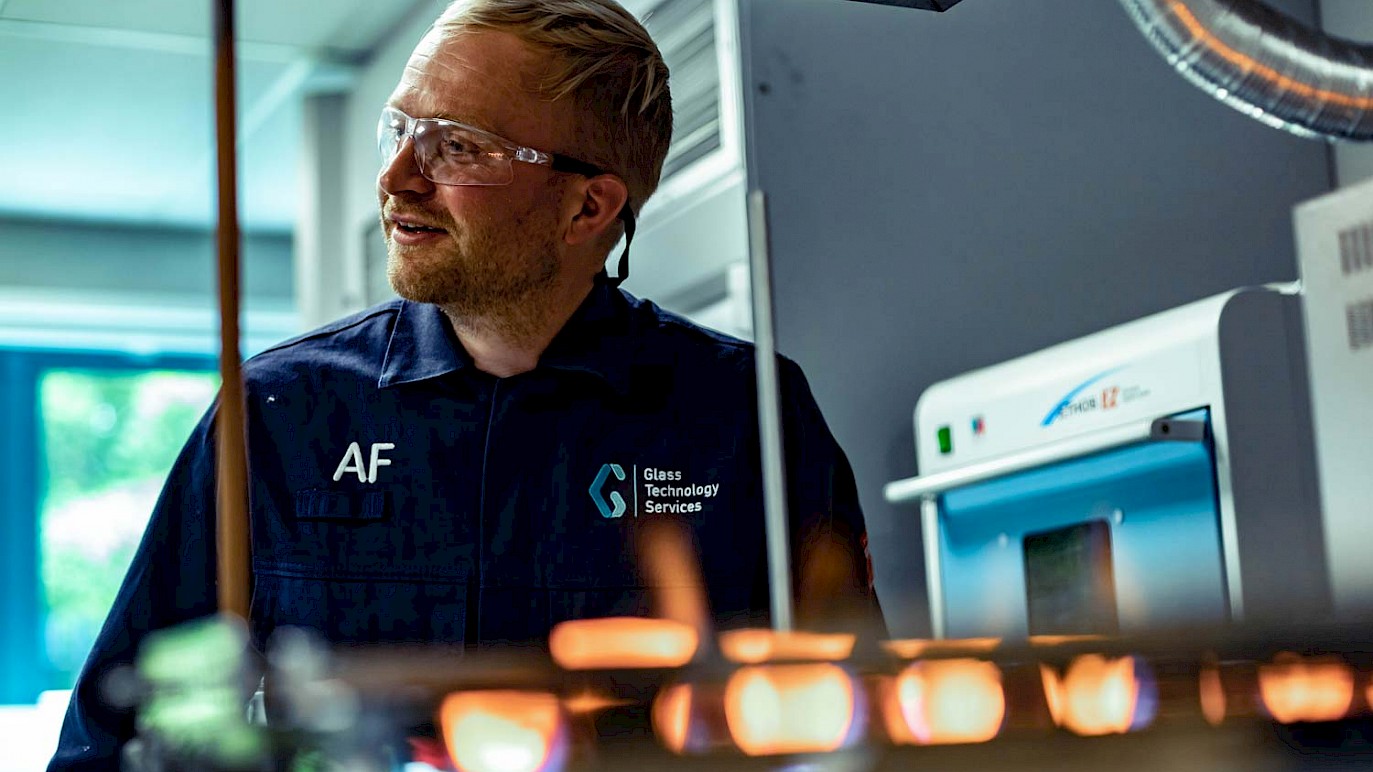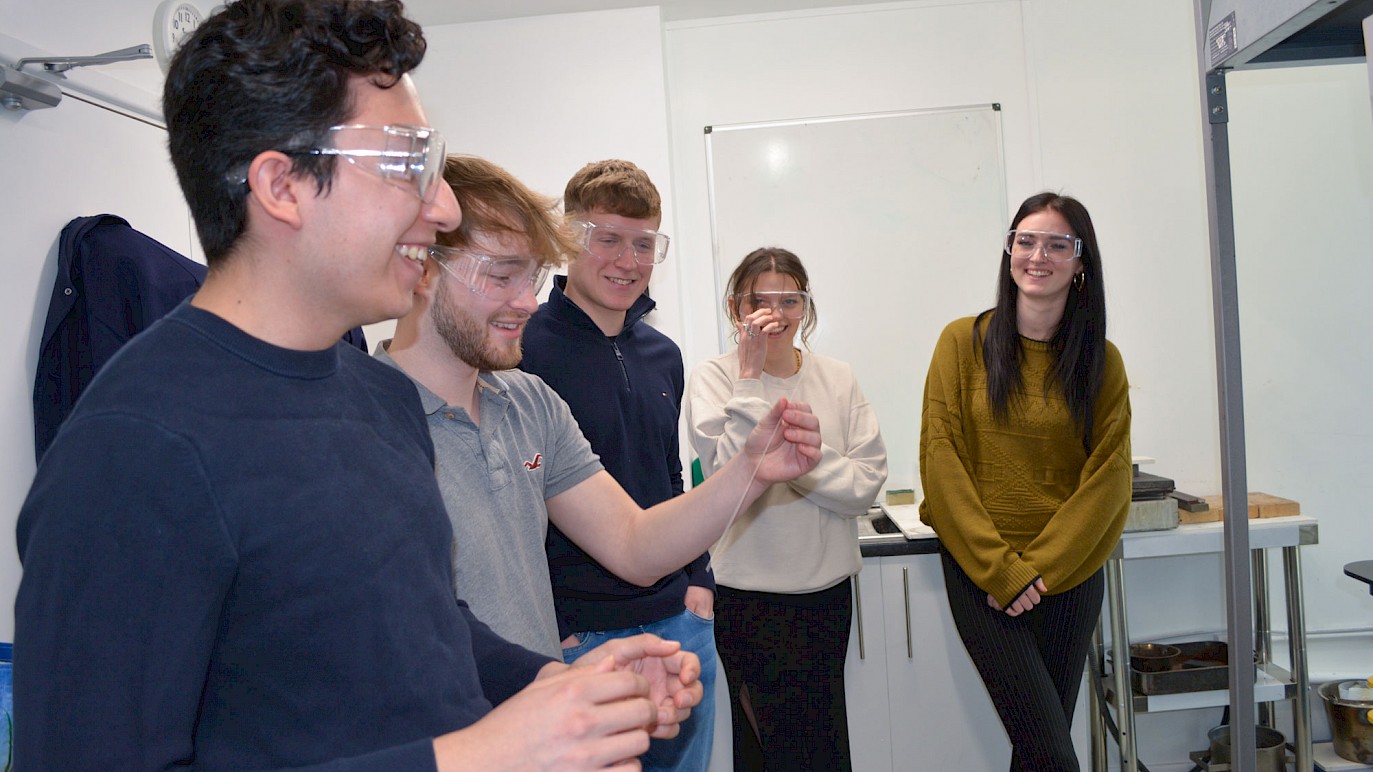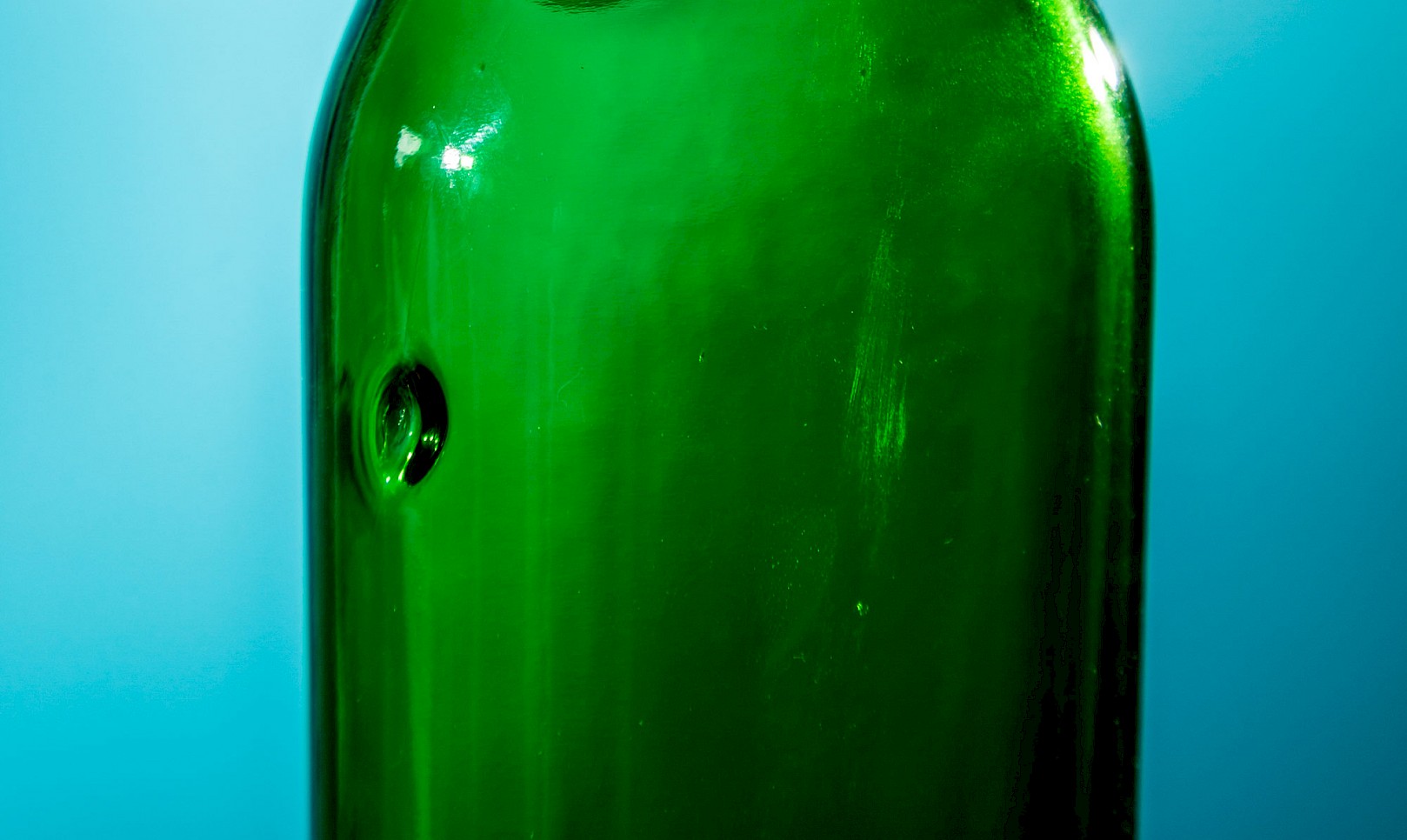
If your glass production facility is experiencing an outbreak of glass defects, it is essential you have the appropriate industry terms to label the type of defect and have sufficient knowledge of the possible causes to rectify the problem.
You might find around eighty types of glass defects on glass defect lists. However, many of these are extremely rare. In this blog, our technical glass experts will summarise the seven most common glass defects that can arise during the glass production process and their possible causes and sources.
1. Inclusions
An inclusion defect occurs when a foreign material or body is in the glass during production. It can originate from unmelted batch materials, wear of furnace refractories, or contamination, such as impurities in the cullet.
Inclusions can affect glass strength depending on their position and if they are stress-raising. Different materials can have different thermal expansion properties, leading to stress within the glass and causing potential failures and spontaneous breakage. It is still an aesthetic and glass quality issue if it's not a weakening feature.
Inclusions can stem from a variety of sources. Here is an overview of the most common ones.
Inclusion sources: cullet
- Pottery — Sometimes, pottery makes its way into the furnace by accident (through plates, mugs, etc). It tends to be porous and low-quality.
- Pyroceramic — This material looks like pieces of glass but does not behave like glass as it has a much higher thermal resistance (meaning it won’t melt in a typical glass furnace).
- Metal — This can cause a potential problem, as it often sinks to the bottom of the furnace, causing problems with furnace wear. It can occasionally get drawn up and end up in the finished product.
- Silicon metal spheres —These inclusions generally occur when aluminium (or pure carbon) is added to the molten furnace.
Inclusion sources: batch
- Oversized batch particles — Inclusions stemming from oversized batch particles are common when meshes or sieves are damaged.
- Mineral contamination — This comes from either the source of the glass material itself or the transportation (for example, if trucks are used for multiple material deliveries).
- Clumping of the batch — These inclusions have a very typical appearance and are caused when the batch itself starts to clump up, meaning it doesn’t melt in the furnace.
Inclusion sources: furnace conditions/set-up
- Devitrified glass — This is caused by the glass molecules changing their structure into crystalline solids.
- Secondary crystal growth — This typically occurs when glass is stagnant and becomes more of a crystal-growing composition.
- Cord — This is caused by the inhomogeneity of the glass, where regions have different compositions from the bulk glass. Cord can be evident in the finished product, causing both stress and aesthetic issues.
- ISI (internal surface inclusions) — These inclusions are caused by contamination of the air used to blow the glass product and can cause high levels of failure.
Inclusion sources: furnace
- Silica crown (the ceiling of the furnace) — It is made of pure silica and is usually easy to identify due to its fish-scale-like appearance.
- Alumina silica wall (above the glass level) — This is not designed to be in contact with the glass, so it can cause issues when it occurs.
- Alumina zirconium silicate contact refractories - This forms the bath of the furnace and is what the molten glass comes into contact with.
- Alumina zirconium silicate consumable refractories — They don’t have a consistent composition and are used in areas of high wear and need to be replaced consistently.
- Fused alumina base tiles — These are located underneath the furnace. They can cause cord and undermine the structure of the furnace.
- Chromite refractories — These are used for glasses where colour is not a concern, and they are very resilient to attacks from the glass.
- Drips and run down — There are two types: alumina silicate or zirconium silicate rundown. Both are from the walls above the melt when a liquid forms, which can then drip into the glass. This can be caused by batching the sodium or the burner set up.
- Metallic molybdenum — This is usually from the boost electrodes.
2. Bubbles
Bubbles are gas inclusions that can appear in the finish, sidewall or base of glass containers. Generally, the term “seed” refers to bubbles less than 1mm in diameter, and blisters or bubbles refer to ones more than 1mm in diameter. However, different companies may use different terms.
Bubble sources
- CO₂ — All batch materials (limestone and soda ash) contain CO2. The presence of CO₂ bubbles is a sign of insufficient refining. There will typically be small and larger numbers of bubbles throughout the glass.
- Nitrogen — This is reasonably rare. It is usually seen in the outgassing of new refractories and should reduce over time.
- Air entrapment — This is one of the most common sources, especially in larger bubbles. Air can be drawn in with the batch materials or due to turbulent conditions.
- Pure oxygen — Any conductive material in contact with the glass can set up an electrochemical cell. You won’t typically see inclusion, but you will see a steady stream of oxygen bubbles coming out of the furnace, and it is quite common.
- Sulphate blisters (reboil) — Bubbles reform later in the furnace because the sulphur in the glass reduces as it cools. These bubbles tend to recur until a change is made to the furnace operation.
- Shear spray — This is caused by the incorrect set-up of the shear spray. They appear at the same point on the product and are typically very large and on the external surface. They might collapse in the middle or pop.
- Mixed — Any mix of the above might occur. Many furnaces run with a background level of bubbles. Growing an existing bubble takes less energy than growing a new one.
3. Chipped finish
A chipped finish defect occurs when a small glass fragment is chipped off the finish (sometimes, it is not entirely detached). When this occurs on the top, it causes problems with sealing, leakage, and the deterioration of the product. When it occurs on the side, it causes a risk of breakage during use.
This defect can result from various issues in the glass production process. One common cause is that the glass in the feeder is too cold. Other causes include but are not limited to:
- Problems with the neck ring
- Incorrect setting of the blowhead
- Issues with the mould or stacking equipment
4. Bird swing
A bird swing defect is a thin strand of glass between the walls or between the wall and the bottom of a glass container. It extends across the inside of the container.
Common causes of a bird swing defect include:
- Too much cooling wind is used before the final blow starts
- Parison is too soft, and blank contact time is too short
- Not enough counterblow is used, or insufficient cooling wind on the blank
- Air leakage into the mould cavity
5. Baffle Marks
Baffle marks are imprints on the bottom of a glass container. They typically occur due to a poor fit between the baffle plate and the blank mould. As a result, the container's heat and pressure resistance and stability might be reduced.
These defects can also occur as a result of the following issues:
- The gob is too heavy
- The parison is too cold
- The pressing pressure is too high
6. Shoulder checks
A shoulder check defect is a surface crack on the shoulder of a glass bottle or container. It doesn’t pass through the entire thickness of the glass and is usually wavy in appearance.
These defects can be caused by an incorrect glass temperature (either too hot or too cold), but the following issues can also cause them:
- The bottom plate is set too high or too low
- The mould is running too hot, causing the bottle to stick to the mould
- Too much final blow pressure, pushing the bottle against the mould
- The mould is not sufficiently relieved on the bottom plate
- Incorrect positioning of the parting line
7. Choked neck
A choked neck defect is when excess glass in the neck wholly or partially obstructs the bore, preventing the insertion of the filling tube. The container is unsuitable for use due to the high risk of breakage during filling, the risk of filling tube breakage and the potential to halt the production line, causing a loss in production.
The defect can be caused by many factors, including:
- Uneven (and usually too hot) glass temperature
- The gob is too pointed
- The counterblow air is on too soon or too late
- Incorrect plunger design
How Glass Technology Services can help
As an independent test house and consultancy for the global glass supply chain, Glass Technology Services helps to resolve production problems, verify the quality of glass packaging and containers and develop innovative glass applications.
We use our breadth of knowledge and unrivalled expertise in glass to provide a range of bespoke services, consulting and guidance to help you optimise your glass production processes.
Glass defects and contamination analysis
Our technical glass experts offer a comprehensive glass defects and contamination analysis service.
We analyse glass composition and causes of defects in the glass manufacturing process so we can solve the problem and get your production issues resolved as quickly as possible. Our team undertakes composition analysis of inclusions, stone, cord, knot, bubbles and blisters, and we examine surface contamination, delamination, misting and blooms. We also assess forming defects and quality concerns in finished glass products.
If you have a question about our service or want more information about how we can help your business, please contact our team. We will be happy to answer your questions.
Free webinar: learn more about glass manufacturing defects
Get access to the webinar